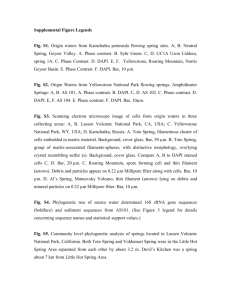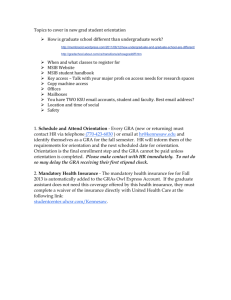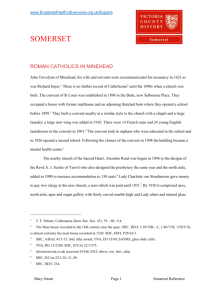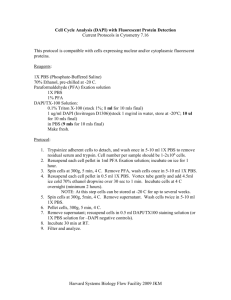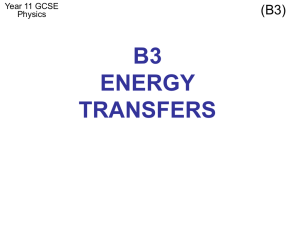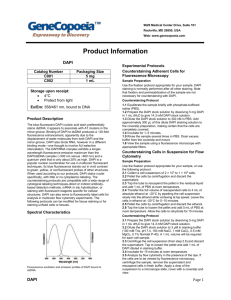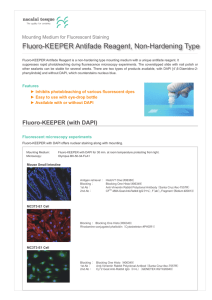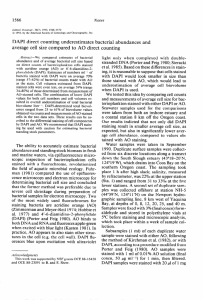PPT - NIH LINCS Program
advertisement
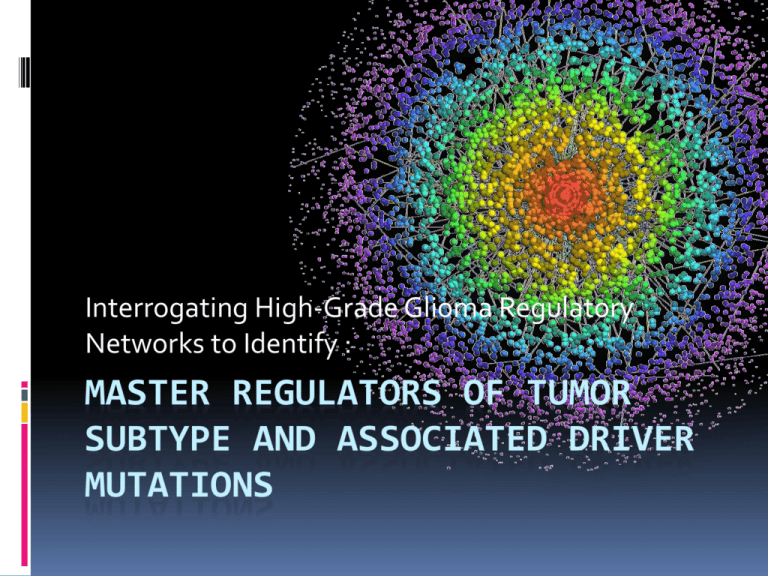
Interrogating High-Grade Glioma Regulatory Networks to Identify : MASTER REGULATORS OF TUMOR SUBTYPE AND ASSOCIATED DRIVER MUTATIONS Genomics Cancer Drugs & Biomarkers Prevention Diagnosis Treatment Epigenomics Cell Regulatory Logic Transcriptomics Other Omics: Metabolomics Proteomics Glycomics … Protein DNA Protein Protein Protein Membrane Clinical Trials miR1 miR2 miR3 miR1 3’ UTR Gene 1 … … 3’ UTR Gene 2 Zhao X et al. (2009) Dev Cell. 17(2):210-21. Mani KM et al. (2008) Mol Syst Biol. 4:169 Palomero T et al., Proc Natl Acad Sci U S A 103, 18261 (Nov 28, 2006). Margolin AA et al., Nature Protocols; 1(2): 662-671 (2006) Margolin AA et al., BMC Bioinformatics 7 Suppl 1, S7 (2006). Basso K et al. (2005), Nat Genet.;37(4):382-90. (Apr. 2005) Basso et al. Immunity. 2009 May;30(5):744-52 Klein et al, Cancer Cell, 2010 Jan 19;17(1):28-40. Sumazin et al. 2011, in press Phenotype 1 (Normal) Phenotype 2 (Neoplastic) A Master Regulator is a gene that is necessary and/or sufficient to induce a specific cellular transformation or differentiation event. MRx ? g 2 4 g 2 5 g 2 6 g 1 9 g 2 3 T F ... T F 2 g 2 0 g 2 7 T F 2 T F 1 g 2 1 g 2 8 g 2 2 g 2 9 TF1: Repressed: 5/7 Activated: 5/7 Coverage: 10/18 (55%) g 1 g 2 g 3 TF2: Repressed: 1/5 Activated: 1/6 Coverage: 2/18 (11%) g 4 g 5 Under-expressed in Tumor Wang K, Saito M, et al. (2009) Nat Biotechnol. 27(9):829-39 Zhao X et al. (2009) Dev Cell. 17(2):210-21. Wang K et al. (2009) Pac Symp Biocomput. 2009:264-75. Mani KM et al. (2008) Mol Syst Biol. 4:169 Wang K et al. (2006) RECOMB g 6 g 7 g 8 g 9 g 1 0 Tumor Signature g 1 1 g 1 2 g 1 3 g 1 4 g 1 5 g 1 6 g 1 7 g 1 8 Over-expressed in Tumor The CTD2 Network (2010), Nat Biotechnol. 2010 Sep;28(9):904-906. Floratos A et al. Bioinformatics. 2010 Jul 15;26(14):1779-80 Lefebvre C. et al (2010), Mol Syst. Biol, 2010 Jun 8;6:377 Carro MS et al. (2010) Nature 2010 Jan 21;463(7279):318-25 Mani K et al, (2008) Molecular Systems Biology, 4:169 Mary Joe TERT Tony MYC Signal GSK3 Degradation MYC TERT GSK3 STK38 (serine-threonine kinase 38, NDR1) 1) Protein-Protein interaction with MYC 2) STK38 silencing in ST486 decreases MYC stability 3) MYC mRNA is not affected 3) MYC targets are consistently affected IP: C-Myc 1 2 3 STK38 (B09) NT 1 IP: Mouse IgG ~400 Gene Expression Profiles for Normal and Tumor Related Human B Cells 3 4 M W 5 1 2 3 4 5 WB: STK38 WB: STK38 WB: MYC WB: c-Myc WB: ACTIN 2 NT 1 2 3 STK38 (B11) 4 5 M W 1 2 3 4 5 WB: STK38 WB: MYC WB: ACTIN Wang K, Saito M, et al. (2009) Nat. Biotechnol. 27(9):829-39 Cancer B Cell interactome (BCi) Breast Cancer Cell interactome (BCCi) T-ALL interactome (TALLi) AML Prostate Cancer interactome (Pci mouse/human) Glioblastoma Multiforme interactome (GBMi) Ovarian Non-small-cell Lung Cancer Colon Cancer Hepatocellular Carcinoma Neuroblastoma NET Stem Cells Mouse EpiSC and ESC Human ESC Germ Cell Tumors (Pluripotency, Lineage Differentiation) Neurodegenerative Disease Human and Mouse Motor Neuron (ALS) Human and Mouse whole brain (Alzheimer’s) Interactomes are generated from primary tissue profiles and thus reflect cell regulation in vivo, in the presence of all relevant paracrine, endocrine, and contact signals Disease Initiation & Progression Biomarkers Pluripotency and Lineage Differentiation Cell Regulatory Logic Therapeutic Targets Small-molecule Modulators Drug MoA and Resistance Mechanism of Action Phenotype 1 (Normal) Phenotype 2 (Neoplastic) A Master Regulator is a gene that is necessary and/or sufficient to induce a specific cellular transformation or differentiation event. MRx ? g24 g25 g26 g19 g23 TF... TF2 g20 g27 TF2 TF1 g21 g28 g22 g29 TF1: Repressed: 5/7 Activated: 5/7 Coverage: 10/18 (55%) g1 g2 g3 TF2: Repressed: 1/5 Activated: 1/6 Coverage: 2/18 (11%) g4 g5 Under-expressed in Tumor g6 g7 g8 g9 g10 Tumor Signature g11 g12 g13 g14 g15 g16 g17 g18 Over-expressed in Tumor 1. Carro, M. et al. (2010). "The transcriptional network for mesenchymal transformation of brain tumours." Nature 463(7279): 318-325 2. Lefebvre C. et al. (2009). "A Human B Cell Interactome Identifies MYB and FOXM1 as Regulators of Germinal Centers." Mol Syst Biol, in press 3. Lim, W. et al. (2009). "Master Regulators Used As Breast Cancer Metastasis Classifier." Pac Symp Biocomp 14: 492-503 Unsupervised clustering of 176 high grade tumors by expression of 108 genes that are positively or negatively associated with survival reveals 3 tumors classes (Proneural (PN), Mesenchymal (Mes) and Proliferative (Prolif). Phillips et al., Cancer Cell, 2006 PNGES MGES PROGES Malignant gliomas belonging to the mesenchymal sub-class express genes linked to the most aggressive properties of glioblastoma (migration, invasion and angiogenesis). Master Regulators control >75% of the Mesenchymal Signature of High-Grade Glioma Mes signature genes Activator Repressor Biochemical Validation of ARACNe Inferred Targets of Stat3, C/EBPb, FosL2, and bHLH-B2 Hierarchical Regulatory Module b GFP c Vector Stat3C C/EBPβ Stat3C+C/EBPβ Vector Stat3C+C/EBPβ 25mm CTGF CTGF GFP/CTGF GFP/CTGF Cola51/DAPI 50 Vector Stat3C+C/EBPβ *** 40 Cola51/DAPI 20 *** 10 25mm YKL40/DAPI 0 YKL40/DAPI Mitogens - Cola51/DAPI 0 YKL40/DAPI + e 400 f Vector b Stat3C+C/EBPβ Cola51/DAPI 200 100 YKL40/DAPI0 Mitogens 70 60 50 40 ** * 30 - 20 + *** 10 Doublecortin 0 f shStat3 Cola51/DAPI shC/EBPβ Cola51/DAPI shCtr 1200 shStat3 1000 shC/EBPβ shStat3+shC/EBPβ 60 50 40 30 20 800 600 400 *** ** 200 0 Mitogens 10 0 g shStat3 + shC/EBPβ Cola51/DAPI c shCtr shStat3 *** shC/EBPβ shStat3+shC/EBPβ 300 200mm shCtr 20 Fibronectin/DAPI βIIITubulin e 40 shStat3 + shC/EBPβ Fibronectin/DAPI Cola51/DAPI 30 60 20 18 16 14 12 10 8 6 4 2 0 Col5A1+cells (%) 25mm shC/EBPβ 80 Fibronectin+cells (%) shStat3 d Fibronectin/DAPI mRNA relative level shCtr Fibronectin/DAPI mRNA relative level a ** Relative mRNA level Ctgf + cells (%of GFP+ cells) 100 shCtr shStat3 shC/EBPβ shCtr shStat3 shC/EBPβ Vector d Stat3C+C/EBPβ shCtr *** shStat3 shCebpb shStat3+shCebpb 12 *** - YKL40 +cells (%) Stat3C+C/EBP GFP mRNA relative level Vector a 10 8 6 4 2 Gfap 0 ** + ** ** Mouse Survival Data 100 Cumulative Survival ** 80 60 40 20 0 40 60 80 100 120 Days post-injection Control Vector Stat3C/EBPbStat3-/C/EBPb- Human Survival Data Mouse immunohistochemistry Carro, M. et al. (2010). Nature 463(7279): 318-325 Mesenchymal Signature Proneural Signature Proliferative Signature TF MES+ FOSL2 45 RUNX1 37 ZNF238 0 CEBPD 27 STAT3 26 BHLHB2 25 MYCN 0 FOSL1 23 ELF4 21 LZTS1 20 CEBPB 20 THRA 0 OLIG2 0 HLF 0 ZNF291 1 SATB1 0 ZNF217 12 MSRB2 0 PKNOX2 0 CUTL2 0 MLL 1 SNAPC1 0 MYT1L 0 HMGB2 0 CREBL2 0 PHTF2 0 TCF3 2 PTTG1 3 E2F6 0 E2F8 0 SMAD4 0 ZNF207 0 KNTC1 0 FOXM1 0 E2F1 0 MES0 0 37 0 0 0 25 0 0 0 0 9 12 7 2 17 0 5 1 0 4 0 0 0 0 0 0 1 0 0 0 0 0 0 0 PN+ 0 0 10 0 0 0 4 0 1 0 0 55 46 43 32 27 0 27 24 24 22 0 20 0 7 0 1 0 0 0 0 0 0 0 0 PN3 5 0 6 3 5 0 2 7 3 3 2 1 1 1 0 27 0 0 0 1 21 0 7 0 6 5 5 5 4 3 3 1 0 0 Prolif+ 0 0 1 0 0 1 0 0 3 0 0 1 0 0 1 0 2 0 0 0 0 7 0 57 0 26 21 37 24 42 23 22 35 24 23 Prolif2 0 0 1 1 0 0 0 0 1 0 4 8 16 11 1 0 3 7 0 6 0 0 0 21 0 0 0 0 0 0 1 0 0 0 E 1 2 3 Sun (3) 6 5 4 22 1.9x10-7 10 TCGA (1) 10 8 Phillips (2) 1Cancer Genome Atlas Research Network, Comprehensive genomic characterization defines human glioblastoma genes and core pathways. Nature. 2008 Oct 23;455(7216):1061-8 2 Phillips, H.S., et al., Molecular subclasses of high-grade glioma predict prognosis, delineate a pattern of disease progression, and resemble stages in neurogenesis. Cancer Cell, 2006. 9(3): p. 157-73. 3 Sun, L., et al., Neuronal and glioma-derived stem cell factor induces angiogenesis within the brain. Cancer Cell, 2006. 9(4): p. 287-300` Distinct Programs with significant overlap across distinct datasets G1 G2 G5 G3 G6 G9 Glioblastoma: G4 G7 G10 G8 G11 Therapeutic Targets = = = = = = = = = = = = EGFR PDGFRA p16 p53 PTEN MDM2 MDM4 MYC NF1 ERBB2 RB1 CDK4 G12 Diffuse Large B Cell Lymphoma: Patient X G1 G2 G3 G4 G5 G6 G7 G8 G9 G10 G11 G12 Carro MS et al. The transcriptional network for mesenchymal transformation of brain tumours. Nature. 2010 Jan 21;463(7279):318-25. Master Regulators: C/EBP + Stat3 Compagno M et al. Mutations of multiple genes cause deregulation of NF-kappaB in diffuse large B-cell lymphoma. Nature. 2009 Jun 4;459(7247):717-21 Master Regulator: Nf-kB pathway X W Y GC-Resistance in T-ALL: Z V Master Regulator Module(s) Molecular Phenotype E.g. GBM subtypes … Disease Stratification Biomarkers Real PJ et al. Gamma-secretase inhibitors reverse glucocorticoid resistance in T cell acute lymphoblastic leukemia. Nat Med. 2009 Jan;15(1):50-8. Master Regulator: NOTCH1 pathway (c) MINDy Analysis (a) Protein Binding Assays M2 M1 Mn M2 M1 Mn C/EBP Comp1 Comp1 STAT3 Compn Compn MGES Collaboration with: S. Schreiber (a) B. Stockwell (b) A. Iavarone and A. Lasorella (a, b, c) (b) High Throughput Screening Gene ID Modulator 11130 ZWINT 3148 HMGB2 2146 EZH2 5984 RFC4 890 CCNA2 6790 AURKA 1894 ECT2 7298 TYMS 780 DDR1 51512 GTSE1 29899 GPSM2 29097 CNIH4 5902 RANBP1 998 CDC42 10549 PRDX4 23228 PLCL2 4862 NPAS2 9308 CD83 51285 RASL12 1389 CREBL2 mature miRNA Mod miR target Sumazin et al. Cell, 2011 Oct 14;147(2):370-81. Analysis of TCGA data for GBM and Ovarian Cancer including matched gene and miRNA expression profiles for 422 and 587 samples Modulation of miRNA activity on targets 7,000 Sponge modulators, participating in 248,000 miR-mediated mRNA-mRNA interactions 148 Non-sponge modulators affecting more than 100 miRs (using only experimentally validated miRs targets) 17/430 are RNA-binding proteins or a component of the spliceosome G1 G14 – G 563 564 node, 111 core sub-graph G2 G3 G13 PTEN G4 G11 G5 G10 G9 p < 5 x 10-23 p < 2 x 10-10 G8 G7 G6 PTEN over expression and silencing effects on SNB19 cell growth rate B Silencing PTEN mPR regulators affects SNB19 cell growth rate Proliferation fold change Proliferation fold change A Days D Silencing PTEN mPR regulators affects SF188 cell growth rate Proliferation fold change PTEN over expression and silencing effects on SF188 cell growth rate Proliferation fold change C Days Days Days C/EBP STAT3 bHLHB2 FOSL2 RUNX1 Hit compound Clinical Trials Molecular Target(s) CTD2 Network Biomarkers: Response/Efficacy Compound Mechanism of Action Current emphasis on genes harboring genetic and epigenetic alterations may not be sufficient Current approach to biomarker discovery should be re-evaluated in a molecular interaction network context. It is not the genes/proteins that change the most but rather those that change most consistently. (mRNA is not informative) From GWAS (Genome-Wide Association Studies) to NBAS (Network-Based Association Studies) We should also focus on Master Regulator and Master Integrator genes Califano A, Butte A, Friend S, Ideker T, and Schadt EE, Integrative Network-based Association Studies: Leveraging cell regulatory models in the post-GWAS era, Nat. Genetics, in press. Accessible in Nature Preceedings: http://precedings.nature.com/documents/5732/version/1 One disease – One target – One drug Multi-target combinations Optimal combination of drugs selected from a repertoire of safe, target-specific compounds using predictive tools. Identification of genetic dependencies (addictions) from Ex Vivo Models Identification of candidate therapeutic agents from In Vitro mechanistic models. Califano Lab (Computational) Mukesh Bansal, Ph.D. Archana Iyer, Ph.D. Celine Lefebvre, Ph.D. Yishai Shimoni, Ph.D. Maria Rodriguez-Martinez, Ph.D. Antonina Mitrofanova, Ph.D. Jose’ Morales, Ph.D. Paola Nicoletti, Ph.D. Pavel Sumazin, Ph.D. Gonzalo Lopez, Ph.D. James Chen, (GRA) Hua-Sheng Chu (GRA) Wei-Jen Chung (GRA) In Sock Jang (GRA) William Shin (GRA) JiyangYu (GRA) Wei-Jen Chung (GRA) Alex Lachman (GRA) Pradeep Bandaru M.A. Manjunath Kustagi (Programmer) Software Development Aris Floratos, Ph.D. (Exec. Director) Ken Smith, Ph.D. Min Yu, (Programmer) Califano Lab Experimental Gabrielle Rieckhof, Ph.D. (Exec Director) Mariano Alvarez, Ph.D. Brygida Bisikirska, Ph.D. XueruiYang, Ph.D. Yao Shen, Ph.D. Presha Rajbhandari, M.A. (Sr. Res. Worker) Jorida Coku, M.A. (Staff Associate) Hesed Kim, (Staff Associate) Sergey Pampou, Ph.D. A. Iavarone & A. Lasorella (CU) Maria Stella Carro K. Aldape (MD Anderson) R. Dalla Favera (CUMC) Katia Basso Ulf Klein R. Chaganti (MSKCC) M. White & J. Minna (UTSW) J. Silva (CU) C. Abate-Shen & M. Shen (CU) D. Felsher (Stanford) Funding Sources: NCI, NIAID, NIH Roadmap
